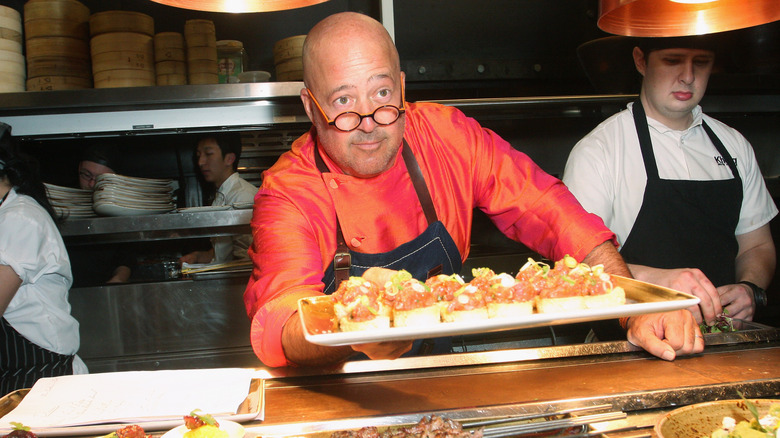
Daniel Boczarski/Getty Images
When asked to choose just three flavor essentials, Andrew Zimmern didn’t hesitate. “I can’t exist without hot chilies, shallots, and citrus… lemon. I’ll pick lemon,” he told The Tim Ferriss Show. To him, these aren’t just spices — they’re the foundation of good cooking. Each one brings acid, depth, and contrast, the building blocks of flavor balance.
Zimmern explained that chilies, shallots, and lemon all contain natural acids, which help create “a more symphonic taste experience.” He layers them the way a painter layers color — lemon zest, juice, and roasted slices, hitting different notes in the same dish. It’s why his wife’s roast chicken sings: she stuffs the bird with lemons, then finishes with a drizzle of fresh juice and olive oil, creating what he calls a “more sensual and deeper flavor.” It’s the same instinct behind his grilled tuna salt seasoning, which uses citrus to pull brightness from the char. His advice for home cooks? Don’t just season — build flavor in stages.
Why those three ingredients are your culinary survival kit

John Parra/Getty Images
Zimmern isn’t just romanticizing chilies, shallots, and lemon. He treats them as versatile tools for layering contrast. In his own recipes, he uses shallots raw for brightness and cooked for depth, chilies for heat and acidity, and lemon in multiple forms to push and pull flavor. Zimmern even folds herbs like tarragon and parsley into aioli using this same layering method, treating each aromatic as a building block, not an ornament. That layering reflects principles similar to those taught at Le Cordon Bleu, which encourages chefs to balance the five flavors — acid, sweetness, bitterness, salt, and umami — by letting ingredients play multiple roles.
At home, use these ingredients like reset buttons: A sprinkle of fresh chili or a squeeze of lemon juice can rescue a sauce or soup that’s gone flat. Zimmern himself points to his favorite vinegar, fruity calamansi vinegar, as another tool he leans on the way he does citrus as he seeks an acidic lift. In short: Once you understand how to layer acid, heat, and onion-derived aromatics, you don’t just season — you compose. That’s Zimmern’s real survival kit.


Dining and Cooking